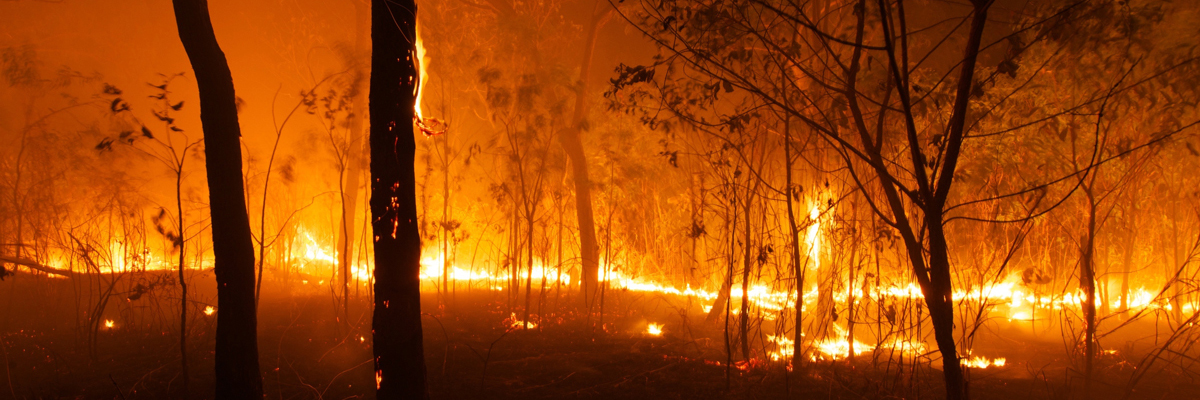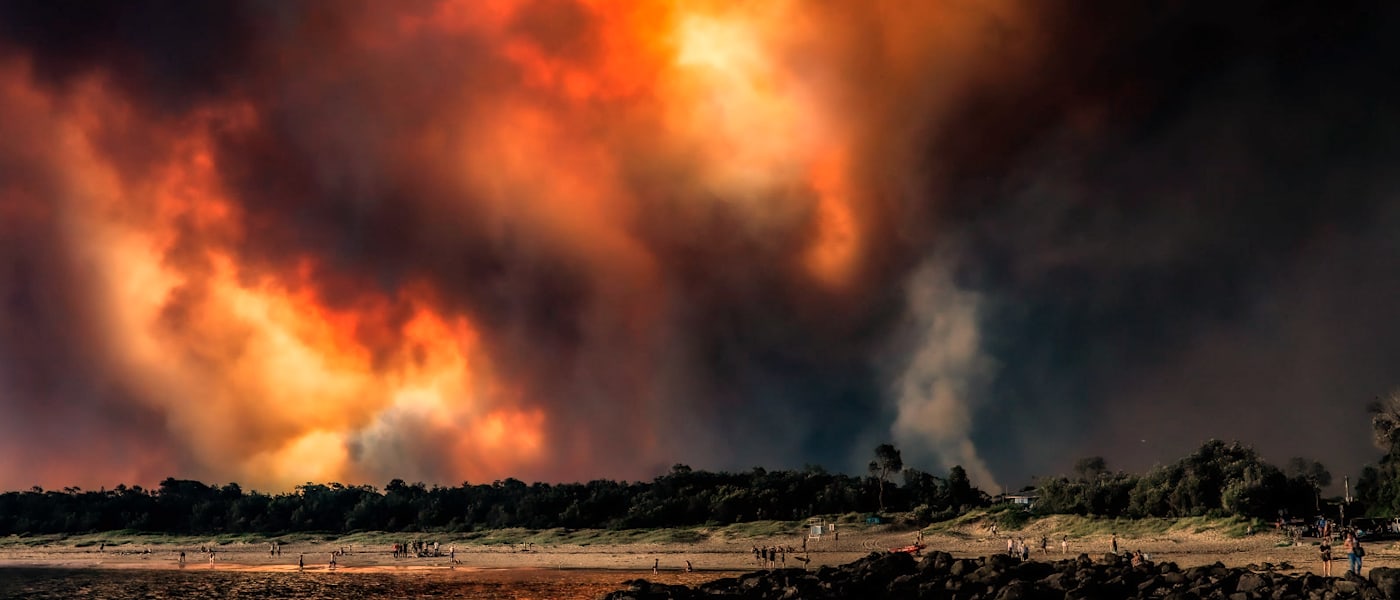BMP Fundamentals: Protecting Your Home Against Bushfire Risks
BMP Fundamentals: Protecting Your Home Against Bushfire Risks
Blog Article
The Value of Bushfire Monitoring in Fire Defense
In the world of fire defense, the value of reliable bushfire administration can not be downplayed. As areas worldwide face increasing instances of wildfires, the aggressive strategy to stop and mitigating these natural calamities via critical bushfire management strategies has emerged as a vital element. Beyond the instant threat to human life and residential property, the interaction in between bushfire management and eco-friendly preservation, area participation, and environment modification postures complicated challenges that demand detailed options.
Relevance of Proactive Bushfire Prevention
Proactive bushfire prevention techniques are vital in minimizing the ruining impacts of wildfires on communities and areas. By taking preventative actions before a bushfire takes place, the dangers connected with these natural calamities can be considerably lowered. One crucial aspect of aggressive bushfire avoidance is fuel monitoring. This includes minimizing the amount of combustible material, such as dead plant life and completely dry leaves, that can function as fuel for fires. Gas management techniques include recommended burns, where regulated fires are purposely lit to minimize the build-up of combustible material.
Enlightening the public on fire safety practices and advertising area recognition about the significance of bushfire avoidance are essential parts of proactive methods. Eventually, positive bushfire prevention plays a substantial role in securing neighborhoods and ecological communities from the devastating impacts of wildfires.
Duty of Neighborhood Interaction in Fire Security
Engaging the neighborhood in fire protection initiatives is integral to boosting the efficiency of positive bushfire prevention strategies. Community involvement plays a critical role in promoting a collective understanding of the threats posed by bushfires and the importance of readiness measures. By entailing regional residents, authorities can share essential info ablaze safety and security techniques, evacuation treatments, and very early warning systems, encouraging people to take positive steps to secure their lives and buildings.
By fostering a culture of readiness and partnership, communities can reinforce their ability to respond successfully to bushfire emergency situations, decreasing the influence on buildings and lives. Ultimately, community engagement is a cornerstone of comprehensive fire protection methods, highlighting the importance of collective activity in guarding prone areas from the hazard of bushfires.
Relevance of Wildlife Conservation in Bushfire Monitoring
Preservation of wildlife plays an essential function in effective bushfire management strategies, making sure the defense of varied environments and biodiversity in fire-prone regions. Wildlife preservation is crucial as it adds to the general durability of environments, aiding in their capacity to recover and stand up to from the effect of bushfires. By saving environments and safeguarding various varieties, the all-natural equilibrium within these ecological communities is preserved, which is necessary for their lasting wellness and sustainability.
In addition, wild animals preservation additionally helps in reducing the risk and strength of bushfires. Healthy communities with well-preserved wild animals populaces can work as natural firebreaks, decreasing the spread of fires and restricting their destructive capacity (BMP). Particular pet species, like tunneling animals or birds that spread seeds, play one-of-a-kind roles in stopping fires or assisting in the post-fire regrowth of environments
Integrating wildlife conservation into bushfire management techniques is not only vital for guarding biodiversity yet likewise for promoting the total wellness and strength of ecosystems despite raising fire risks.
Benefits of Strategic Fuel Decrease Programs
Strategically applying gas decrease programs is important in reducing the danger and impact of bushfires in fire-prone areas. These programs entail regulated burning, mechanical clearing, and various other methods to minimize the quantity of flammable plant life readily available to sustain wildfires. By purposefully decreasing fuel loads in key areas, such as close to domestic communities or critical infrastructure, the intensity and spread of bushfires can be considerably reduced.
One of the primary benefits of fuel decrease programs is the improvement of overall fire Look At This resilience in an environment. By producing calculated fuel breaks and reducing the continuity of plant life, these programs assist to disrupt the course of a bushfire, making it simpler for firemens to snuff out the blaze and have. In addition, gas reduction programs can secure biodiversity by protecting against excessively extreme fires that can ravage habitats and endanger wild animals populaces.
Furthermore, these programs can also protect human lives and residential property by lowering the threat of disastrous fires that posture a substantial risk to areas. Inevitably, tactical gas reduction programs play a vital function in proactive bushfire administration and cultivating a much safer setting for both people and nature.
Effect of Environment Modification on Bushfire Risk

Higher temperatures result in drier greenery, making it a lot more vulnerable to ignition. Minimized rains in specific areas prolongs drought problems, additionally enhancing the flammability of the landscape. In addition, the changing environment has actually altered wind patterns and weather, bring about more irregular fire behavior and fast fire spread.
As the climate continues to alter, the regularity and intensity of bushfires are expected to increase, requiring a adaptive and positive strategy to bushfire monitoring. Techniques should evolve to account for the transforming risk additional resources landscape, integrating climate projections and taking into consideration lasting strength in fire monitoring planning. Addressing Check This Out the influence of environment adjustment on bushfire danger is vital in developing efficient techniques to shield lives, building, and the environment.
Verdict
Finally, proactive bushfire prevention, area involvement, wildlife conservation, calculated fuel reduction programs, and consideration of climate adjustment are vital components in efficient fire defense. By implementing these strategies, we can much better manage bushfire threats and protect both human lives and the atmosphere. BAL Assessment. It is essential that stakeholders function with each other to focus on these actions to minimize the disastrous influence of bushfires on areas and ecosystems

As the environment continues to alter, the regularity and strength of bushfires are expected to rise, requiring a adaptive and positive approach to bushfire monitoring.In conclusion, proactive bushfire avoidance, area interaction, wildlife conservation, tactical gas decrease programs, and consideration of climate modification are essential elements in efficient fire security.
Report this page